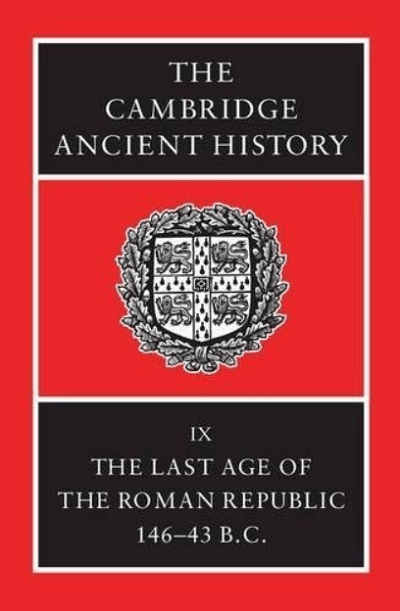

811 s, s/b resimler, sert kapak ciltli, şömizli, İngilizce.
Volume IX of the second edition of The Cambridge Ancient History has for its main theme the process commonly known as the 'Fall of the Roman Republic'. Chapters 1-12 supply a narrative of the period from 133 BC to the death of Cicero in 43 BC, with a prelude analysing the situation and problems of the Republic from the turning-point year 146 BC. Chapters 13-19 offer analysis of aspects of Roman society, institutions, and ideas during the period. The chapters treat public and private law, the beginnings of imperial administration, the economy of Rome and Italy, and the growth of the city of Rome, and finally intellectual life and religion. The portrait is of a society not in decay or decline but, rather, outstripping its strength and attracting the administrations of men who rescued it at the price of transforming it politically.
Review: "The new CAH IX is a welcome achievement, a readable and reliable political narrative with significant thematic contributions that mark major progress in sophistication and incisiveness of thought." The Classical Journal List of maps; List of text figures; Preface; 1. The crisis of the Republic: sources and source-problems; 2. The Roman empire and its problems in the late second century; 3. Political history, 146 95 BC; 4. Rome and Italy: the Social War; 5. Mithridates; 6. Sulla; 7. The rise of Pompey; 8a. Lucullus, Pompey and the East; 8b. The Jews under Hasmonean rule; 8c. Egypt, 146 31 BC; 9. The Senate and the populares, 69 60 BC; 10. Caesar, Pompey and Rome, 59 50 BC; 11. Caesar: civil war and dictatorship; 12. The aftermath of the Ides; 13. The constitution and public criminal law; 14. The development of Roman private law; 15. The administration of the empire; 16. Economy and society, 133 43 BC; 17. The city of Rome and the plebs urbana in the late Republic; 18. The intellectual developments of the Ciceronian age; 19. Religion; Epilogue; Stemmata; Chronological table.
